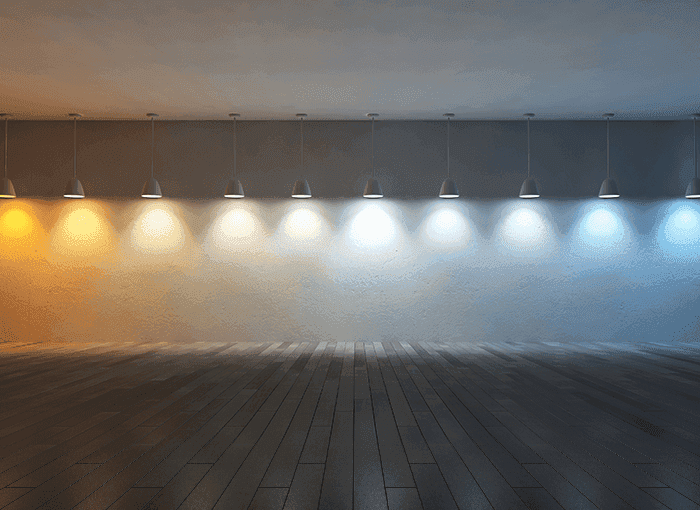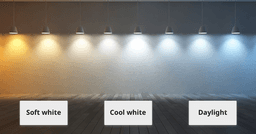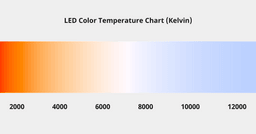LED Temperature and Color Buyer’s Guide

Table of contents
Light bulb colors: soft white vs. cool white vs. daylight
What does yellow, white, or blue mean in a light bulb?
The best light bulb lumens for each room
Read more about LEDs and home energy efficiency improvement projects
In this article we’ll help you choose the right LED temperature and color for every room in your home. For a more comprehensive guide to LED lighting check out our LED buyer’s guide. And to estimate how much money and energy LEDs can save you, check out our LED savings guide.
Light bulb colors: soft white vs. cool white vs. daylight
If you’ve ever walked into a living room that felt kind of like a dentist’s office or had to squint when looking in the mirror in the bathroom, it’s probably because the light bulbs were the wrong color.
The difference between a soft warm light and a harsh blue light is massive. And that’s why it’s so important to find the right LED color and temperature.
So how can you find the right bulb for your home?
Light bulbs generally come in three “colors” (also called temperatures) with an associated amount of kelvins (we’ll get into that a bit later):
- Soft / warm white (2200K – 2700K) gives a warm and cozy (almost yellowish) hue to the room. It’s best for living rooms and bedrooms.
- Cool white (3000K – 4100K) is a more standard white color, and it’s most suitable for a kitchen, bathroom, or study room.
- Daylight (5000K – 6000K) gives off a bright, blueish light that works best for things like reading lamps. It’s usually not a good idea to use these for an entire room.
What does yellow, white, or blue mean in a light bulb?
We’re saying that bulbs give off a yellow, white, or blue hue. But obviously they don’t turn your room that color. Without getting too technical, here’s what’s happening: the hotter an object, the more types of visible light it gives off, appearing in whole at first as red, then white, and eventually bluish light.
The following chart shows the progression of this color change, with the units at the bottom in kelvins. This range goes from oranger “warmer” light at 1,000K, which closely resembles candlelight, to bluer “cooler” light at 12,000K which resembles a clear blue sky.
The “cooler” the light (more kelvins), the closer to daylight the human brain thinks it is. This is what makes cooler bulbs perfect for areas where you need to be alert and be able to perceive contrasts, such as a kitchen, while these kinds of lights would make it harder to fall asleep if used in a bedroom.
Generally, you’ll want to use “warmer colors” (below 3,500K) for 70% of your lighting, saving the whiter or bluer lights in areas where more detailed work is done.
Light bulb color accuracy
The Color Rendering Index (CRI) is another thing you might see shouted out on a bulb label or description. Also known as color accuracy or high chromatic index (HCI), it measures how well the light shows colors.
The image below, courtesy of Derun Lights, shows how different an object can look with different CRIs.
CRI is scored using a value from 0 to 100, where 100 is the score given to direct overhead sunlight. As you can see from the image above, objects under light bulbs with lower CRI scores appear washed out and can cause colors to blend or become dull. Objects under bulbs with higher CRI scores appear more crisp, and more variations of colors can be seen.
A CRI minimum of 80 is required to receive the Energy Star designation, but for areas where more detailed tasks occur, a CRI of 90+ is recommended.
The best light bulb lumens for each room
It’s not only about the color of your bulbs. You’ll also need a different amount of lumens (which measures brightness) depending on the room.
For more details on lumens, you can read our guide to LED lighting. But this chart gives you some general guidelines for how many lumens you’ll want in each room.
Generally, the more detailed work you expect to do in an area, the brighter you want the space to be and the higher lumen per square foot value you want. You can get the number of lumens you need from one bulb in one lamp, or you can spread it among many bulbs throughout the room.




